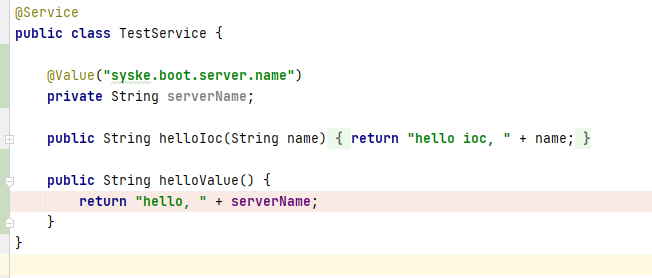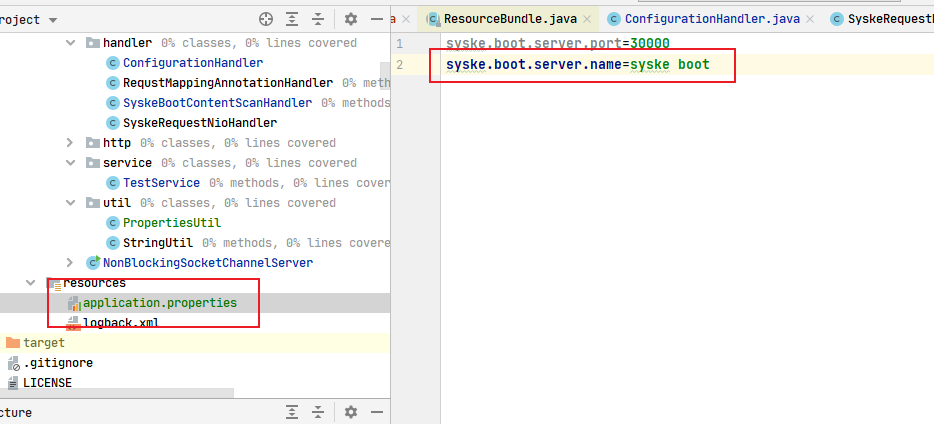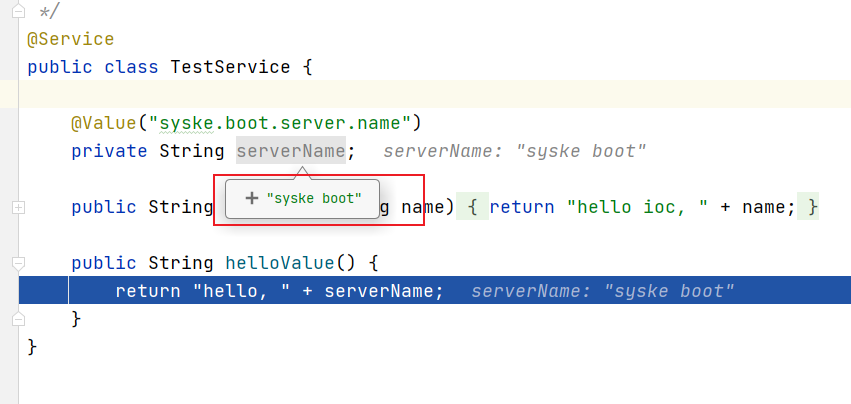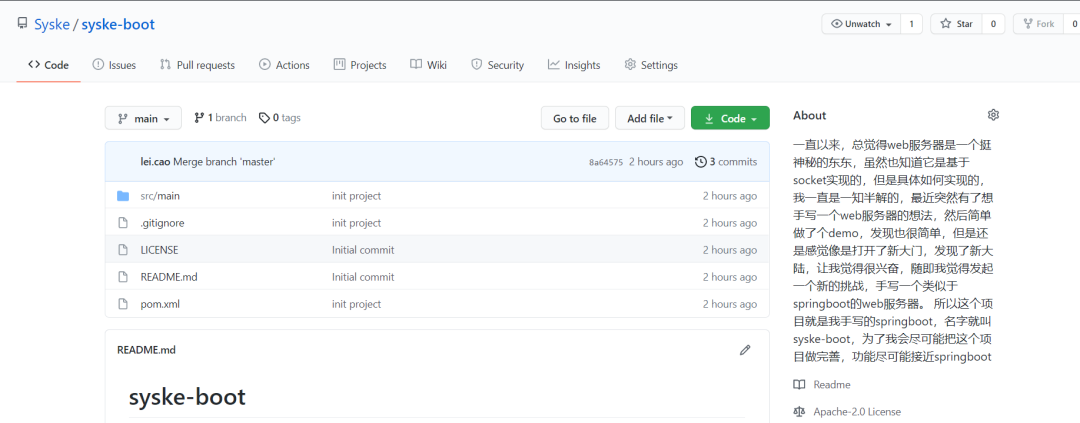手写web服务器:定义@value注解,实现配置自动注入
共 10560字,需浏览 22分钟
·
2021-06-12 06:33

前言
昨天我们定义了Configuration注解和Bean注解,实现了更灵活的类注入,今天我们来看另一个配置注入的注解Value,这个注解也是我们在springboot中经常用到的,今天我们就来看下如何通过value注解实现properties配置的自动注入。
实现过程
定义properties工具类
这个工具类的作用主要是解析我们的配置文件,并生成一个配置文件的字典数据,然后我们可以根据自己的需要获取对应的配置,这也是我们实现配置自动注入的第一步。
public class PropertiesUtil {
private static HashMap<String, PropertiesUtil> configMap = new HashMap();
private Date loadTime = null;
private ResourceBundle resourceBundle = null;
private static final Integer TIME_OUT = 60000;
private PropertiesUtil(String name) {
this.loadTime = new Date();
try {
this.resourceBundle = ResourceBundle.getBundle(name);
} catch (Exception var3) {
this.resourceBundle = null;
}
}
public static synchronized PropertiesUtil getInstance() {
return getInstance("application");
}
public static synchronized PropertiesUtil getInstance(String name) {
PropertiesUtil conf = configMap.get(name);
if (null == conf) {
conf = new PropertiesUtil(name);
configMap.put(name, conf);
}
if ((new Date()).getTime() - conf.getLoadTime().getTime() > (long)TIME_OUT) {
conf = new PropertiesUtil(name);
configMap.put(name, conf);
}
return conf;
}
public String get(String key) {
try {
String value = this.resourceBundle.getString(key);
return value;
} catch (MissingResourceException var3) {
return "";
} catch (NullPointerException var4) {
return "";
}
}
public Integer getInt(String key) {
try {
String value = this.resourceBundle.getString(key);
return Integer.parseInt(value);
} catch (MissingResourceException var3) {
return null;
} catch (NullPointerException var4) {
return null;
}
}
public boolean getBoolean(String key) {
try {
String value = this.resourceBundle.getString(key);
return "true".equals(value);
} catch (MissingResourceException var3) {
return false;
} catch (NullPointerException var4) {
return false;
}
}
public Date getLoadTime() {
return this.loadTime;
}
public static String getPropertiesValue(String name, String key) {
try {
return getInstance(name).get(key);
} catch (MissingResourceException var3) {
return "";
} catch (NullPointerException var4) {
return "";
}
}
}
定义value注解
依然是轻车熟路,这里的value()是用来接受我们的配置名称的。
@Target(ElementType.FIELD)
@Retention(RetentionPolicy.RUNTIME)
public @interface Value {
String value();
}
实现配置注入
在之前的实现基础上,我们增加了一个配置处理的类,这个类有两个方法,分别是用于实现单个属性注入和批量属性注入:
public class ConfigurationHandler {
private static final PropertiesUtil propertiesUtil = PropertiesUtil.getInstance("application");
/**
* 初始化value配置信息
* @param instance
* @param field
* @throws IllegalAccessException
*/
public static void initValueConfig(Object instance, Field field) throws IllegalAccessException {
Annotation annotation = field.getAnnotation(Value.class);
if (Objects.nonNull(annotation)) {
String propertiesKeyName = ((Value) annotation).value();
Class<?> type = field.getType();
if (!field.isAccessible()) {
field.setAccessible(Boolean.TRUE);
}
if (Integer.class.equals(type)) {
field.setInt(instance, propertiesUtil.getInt(propertiesKeyName));
} else if (Boolean.class.equals(type)) {
field.setBoolean(instance, propertiesUtil.getBoolean(propertiesKeyName));
} else {
field.set(instance, propertiesUtil.get(propertiesKeyName));
}
}
}
/**
* 批量初始化value配置
* @param aClass
* @param instance
* @throws IllegalAccessException
*/
public static void batchInitValueConfig(Class aClass, Object instance) throws IllegalAccessException {
Field[] declaredFields = aClass.getDeclaredFields();
for (Field declaredField : declaredFields) {
initValueConfig(instance, declaredField);
}
}
}
首先,我们在IoC实例化阶段,对各种组件的字段进行扫描,拿出有Value注解的属性,根据注解的值获取对应的配置。
使用效果
我们在service组件上加入一个属性,并加上value注解:

然后在我们的配置文件中增加对应的配置:

运行测试
运行测试下:

可以看到,我们的配置已经被注入进来了,这样注入配置,既简单又方便。当然,相比于Spring的Value注解,我们的还是显得比较低级,因为spring的value注解是支持表达式的,它有一套专门的Spring EL,所以我们看的spring的value是这样写的:
@Value("${syske.boot.server.name}")
private String serverName;
// 或者这样
@Value("#{syske.boot.server.name}")
private String serverName;
好了,今天的内容就这么多,我们接下来总结一下。
总结
注解本质上只是一种标记,是为了便于我们通过反射操作类的属性、方法等资源,实现我们的高级功能。value注解就是获取配置的一种标记,我们通过在实例化对象后对其字段操作,实现配置的自动注入。
在我实际测试的时候,我发现这种配置注入方式,对静态变量也是有效的,但是spring的value对静态变量是无效的,暂时没有去看spring的源码,不知道是实现方式的问题还是EL表达式的锅。
原本我以为是因为字段和方法的反射操作都是基于类的实例,所以对于静态方法和变量是没有任何效果的,但是经过实测的时候,发现并非如此,后面再好好研究下。
下面是项目的开源仓库,有兴趣的小伙伴可以去看看,如果有想法的小伙伴,我真心推荐你自己动个手,自己写一下,真的感觉不错:
https://github.com/Syske/syske-boot

